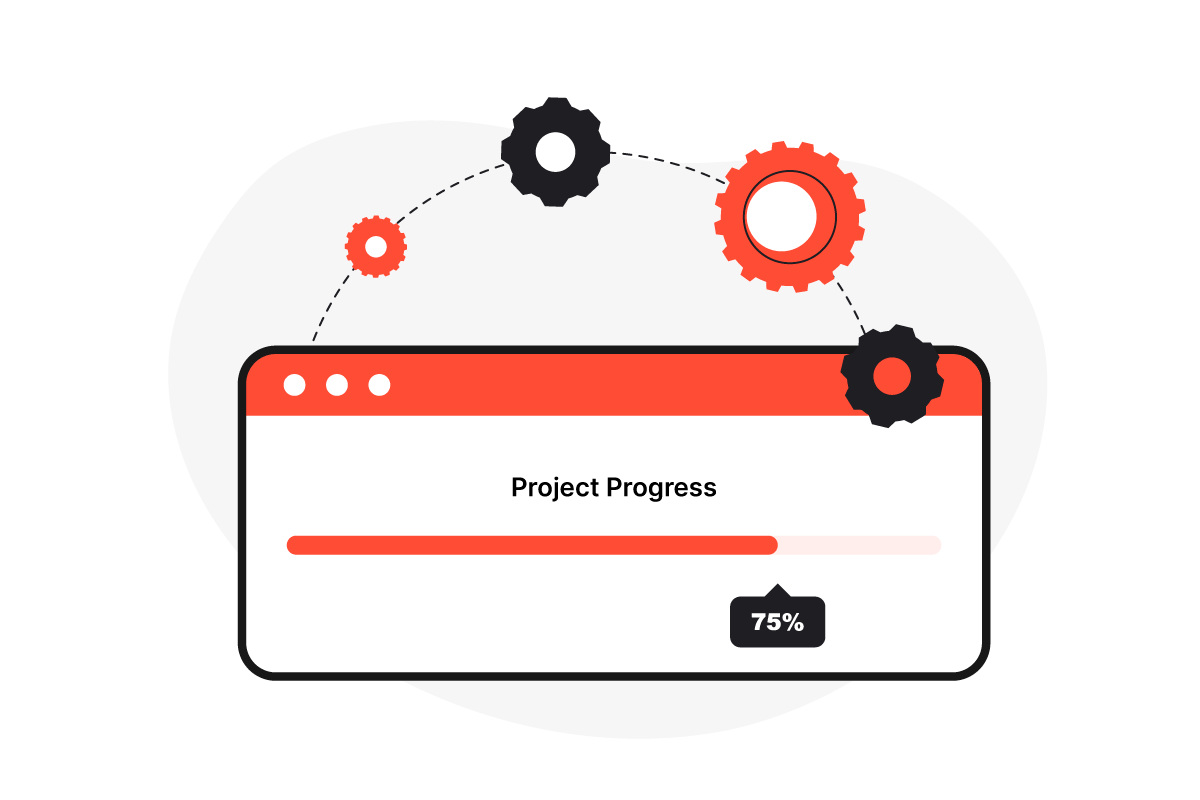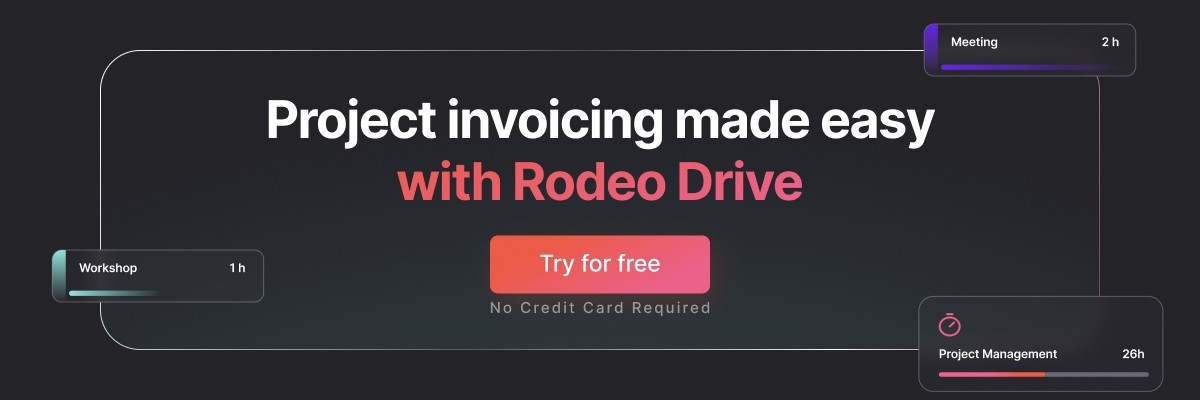The concept of project management consists of four elements; the 4 Ps. The extent to which you understand these 4 principles and their place in the project lifecycle can greatly impact the success rate of your projects.
Make sure to get your whole team up to speed on this topic, as it will play a huge role in eliminating potential roadblocks while helping you meet your goals and objectives.
The project lifecycle
Of course, the scope of each project can be completely different, and every company has its own way of working. However, a typical project usually goes through a similar sequence of phases, known as the project life cycle.
The stages of the project life cycle have been defined by various leaders after researching the industry's best practices. Thus, you could say that the project life cycle is pretty much the standard process to be followed in order to make projects successful.
The project life cycle is broken down into 4 phases:
- Concept
- Planning
- Execution
- Closing
Also read: The Ultimate Guide to Managing Projects Effectively
Concept
Any typical project starts with a phase during which the concept is defined. This is also commonly referred to as the initiation phase.
It all starts with identifying the project objective, which can be a need translated into an opportunity or problem. The project with its deliverables is the solution to this need.
The next step often involves some research in the form of a feasibility study, to determine whether the proposed solution will really satisfy the need. It also helps to determine beforehand which resources will be needed, and which information should be included in the business contract.
Once the proposal is approved, the project can be started by bringing together the team that will work on the deliverables. Led by the project manager, the overall scope of the work is outlined.
Related: A Comprehensive Guide on How to Become a Project Manager
Planning
Moving on to the planning phase, the complete execution strategy for the project is thoroughly planned out. This includes every detail of the scope of the work, outlining exact tasks, activities, responsibilities, deadlines, processes, resources, and deliverables. In other words, a precise plan for how the project objectives will be met.
First, the project manager creates a budget and an estimation of the costs, after which all other elements can be planned accordingly. Often this is referred to as scope management, as the plan involves linking each activity to resource requirements.
Once a detailed schedule is created, the project manager must also identify potential threats and roadblocks, which is referred to as risk management. During this step, strategies are developed to reduce the risk of a problem occurring, or at least reduce the impact it might have. Often, this goes hand in hand with creating a detailed communication plan.

Execution
Also referred to as the implementation phase, the execution phase is when the actual work of the project is carried out. The team works towards achieving the project’s objectives by actively working on all the tasks involved.
No matter how meticulously the project has been planned, the project manager will typically be the busiest during this phase. They must continuously measure the progress made to ensure the project will become successful.
The performance of the project is constantly compared to the project plan to make sure deliverables meet expectations and the team stays on schedule. That’s why keeping track of the budget and use of resources is crucial.
If there are any roadblocks or deviations from the plan, it’s up to the project manager to make decisions and take corrective action. Maintaining a clear line of communication, especially during regular meetings, is a must along with properly recording all project data.
Even if all is going according to plan, the team should always seek ways to optimize processes and resource management even more.
The end of the execution phase is in sight once all deliverables are produced and reviewed according to the acceptance criteria.
Closing
The last phase in the project life cycle is called the closing phase, or the termination phase. During this last step, the deliverables are handed over to the client.
The closing of the project also requires all administrative tasks to be completed, resources to be released, and all stakeholders involved to be informed of the closure.
Then, finally, the team can evaluate the project thoroughly. An assessment of what went well and what should be handled differently next time will certainly help with future projects.

The 4 Ps of project management
Now that you understand the project life cycle, you will be able to better recognize where the four elements of project management fit in. These four components are absolutely vital to a project’s success.
Without them, the planning and execution phases of your project are very vulnerable to threats and roadblocks. To be more exact, it will be much more difficult for the team to achieve the project’s objectives.
#1 People
The first of the four Ps stands for people. This is virtually any type of stakeholder who is involved in the project. Project stakeholders can include for example:
- Project manager
- Project administrator
- Project team members
- Executive management of the company
- Clients/customers/end users
- Suppliers and outsourced labor
- Sponsors and investors
- Business analysts
- IT professionals
To ensure a project’s success, identifying the skills, roles, and responsibilities of each person involved is the first step. You need to have the right people on board, they are always considered the primary resource.
Having adequate team members on hand who clearly understand their roles and responsibilities will increase your chances of successfully completing the project. Next to this, however, it also depends on how well they are managed. An experienced and competent project manager can make all the difference.
#2 Product
Product is the second P of the four and stands for the project scope, along with the actual deliverables.
Thus, the product doesn’t necessarily refer to a physical product. It is simply whatever represents the goal of the project. The development of a marketing strategy or campaign for example, or the realization of a new business division.
The resources, materials, quality, and everything else that defines the development of the project belong to the P of product. Having a profound understanding of all the elements related to the product will help the project manager to define and control the deliverables throughout the project life cycle.
#3 Process
The third P stands for the process the team will follow in order to produce the product. Keeping in mind that the product is what they will deliver, the process focuses on how they will deliver it.
This involves the exact tasks and activities that need to be completed, as well as putting a specific project management methodology in place.
Let’s say for example, that an Agile method is chosen. This comes with a very detailed process for how to handle things, from certain meetings to a very specific pattern of workflows.
A way to optimize and accelerate the process is to implement project management software. One of the major benefits is always having a visual representation of how the process is outlined, and how it’s progressing.

#4 Project
To conclude the four Ps, the last one stands for Project. This P puts all of the emphasis on the importance of the project manager.
The project manager coordinates and controls the whole project through its life cycle, maintaining an overview at all times. Closely monitoring everything, the project manager makes sure that all team members have the data and resources they need to keep the project moving forward. They guide the team in other ways too, by keeping them motivated and holding them accountable.
Every little update or activity is overseen by the project manager, who deals with obstacles and keeps track of the budget and deliverables every step of the way.
Ultimately, the P for project can be defined as the structure or framework that is governed by the project manager in order to achieve the project’s objectives.
Takeaway
It’s clear by now that project management requires a lot more theoretical structure than simple problem-solving. We all know this usually starts with the famous 5 Ws, outlining the who, what, when, where, and why.
The four Ps cover the 5 Ws in a way that is much more specifically suited to project management, which clearly shows how they fit into the project life cycle.
No matter how inexperienced a project manager is, having this valuable knowledge greatly increases their capability to manage risks and obstacles while achieving objectives.
Are you determined to ensure each project is always a success? Use Rodeo to optimize your workflows and save a lot of time!







